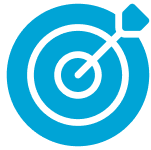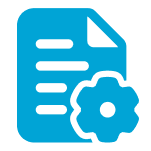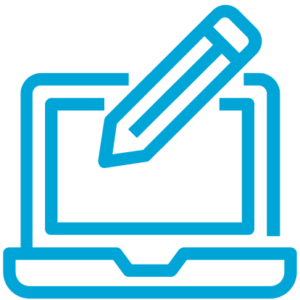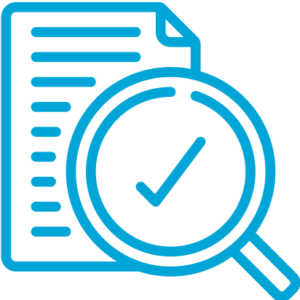Writing Your Resume
Crafting a compelling resume is an essential step in your career journey. Whether applying for an internship or seeking a job after graduation, your resume should effectively showcase your skills, experiences, and accomplishments. Here is how to create standout resumes tailored for these pivotal stages.


Resume for Internship Position
Applying for an internship often requires a different approach than a full-time job application. Here is how to create a resume that will help you land that crucial internship:

Contact Information:
Start with your full name, phone number, professional email address and LinkedIn profile.

Objective Statement:
Write a brief, objective statement that outlines your career goals and how the internship aligns with these goals.

Education:
Highlight your academic background, including your current school, degree programme and expected graduation date. Mention relevant coursework, projects or academic achievements.

Skills:
List skills relevant to the internship. Include both hard skills (e.g., proficiency in specific software or technical skills) and soft skills (e.g., communication, teamwork).

Experience:
If you have previous work experience, focus on roles related to the internship. Include part-time jobs, volunteer work, or extracurricular activities. Emphasise any tasks or projects where you demonstrated key skills.

Projects:
Include academic or personal projects that are relevant to the internship. Describe your role, the skills you used, and the outcomes.

Extracurricular Activities:
Highlight involvement in clubs, organisations, or sports teams. Focus on leadership roles or significant contributions.

References:
You can include a line stating that references are available upon request.

Resume for After Graduation
As a recent graduate, your resume should highlight your academic achievements, relevant experiences, and any skills that make you a strong candidate for a full-time position.

Contact Information:
Start with your full name, phone number, professional email address and LinkedIn profile.

Summary Statement:
Provide a brief summary that highlights your academic background, key skills, and career objectives.

Education:
Detail your degree(s), including your major, university, and graduation date. Mention any honours or relevant coursework.

Skills:
List both hard and soft skills that are relevant to the job you’re applying for. Include technical skills, languages and other proficiencies.

Professional Experience:
Focus on internships, part-time jobs or relevant work experience. Describe your responsibilities and accomplishments using action verbs and quantifiable outcomes.

Projects and Research:
Highlight significant academic projects, research or capstone projects. Emphasise your role, the skills you utilised and the results.

Certifications and Training:
Include any additional certifications or training that enhance your qualifications.

References:
Detail involvement in university clubs, organisations or volunteer work, focusing on leadership roles and significant contributions.
If you have any questions or need further assistance, don’t hesitate to reach out to our support team. We’re here to help you succeed!
CV (Curriculum Vitae)
A CV provides a detailed overview of your academic background, research, publications, and professional experiences and is often used for academic, research and international positions.
Like a resume, your CV will summarise your education, experiences and accomplishments related to a specific job posting. Academic CVs differ from resumes in the additional material they include and their focus on the “three pillars of the academy: research, teaching and service.”

Writing Your CV
Crafting your CV with essential details such as your contact information, educational background and a brief overview of your dissertation topic. The subsequent order of sections should be tailored to highlight your strengths, align with the job requirements and adhere to the customs of your field. To grasp field-specific norms, consider seeking examples from your advisors, mentors or peers.
CV Sections
Include key sections such as contact information, education, research and teaching experiences, publications, presentations, honours and references. Arrange the information within these sections in reverse chronological order.
Depending on your background and the job’s requirements, consider incorporating additional sections like grants, fellowships, professional service, invited talks, non-academic experience, memberships, languages or community engagement.
Organise these sections strategically to ensure vital details are prominently displayed, preferably on the initial page.
Tailoring Your CV
Customise your CV for each job application by prioritising the most relevant information.
For instance, individuals targeting teaching-focused positions might opt to showcase their teaching experience prominently following their educational background.
Contact Us: If you have any questions or need further assistance, don’t hesitate to reach out to our support team. We’re here to help you succeed!
Cover Letter
A cover letter allows you to introduce yourself and explain why you are the ideal candidate for a position. It complements your resume or CV by providing additional context about your skills and experiences.
The purpose is to convince an employer that your skills and background make you worth interviewing. Although a cover letter is not always required, when it is, it gives you the opportunity to explain why you are interested in that particular company, making you a more attractive candidate to that employer.

Writing Your Cover Letter
Crafting a cover letter doesn’t have to be daunting. A strong cover letter will demonstrate the following:

Knowledge about the job, the company and the industry.

The effort you have put into your job search and enthusiasm for the job.

Writing and organisational skills.

Focus on your skills and your potential contributions.

Customise Your Cover Letter
Research: Learn about the company to tailor your letter.
Highlight Relevant Experience: Focus on what matters most for the job.
Personalise: Make it specific to the company and role.

Proofreading and Editing
Check for Errors: Look for typos and grammar mistakes.
Read Aloud: Listen for awkward phrasing.
Tailor for Clarity: Keep it clear and concise.
Request Internship Letter
To request an official internship letter, which many employers require to confirm your student status and eligibility, simply send an email with your details to norhisham@inceif.edu.my.
In your email, please include the following information:
- Your full name and student ID
- The name and contact details of the organisation offering the internship
- The internship duration and start date
- Any specific details or formats required by the employer
Our career advisory team will process your request promptly and provide the necessary documentation to facilitate your internship application.






